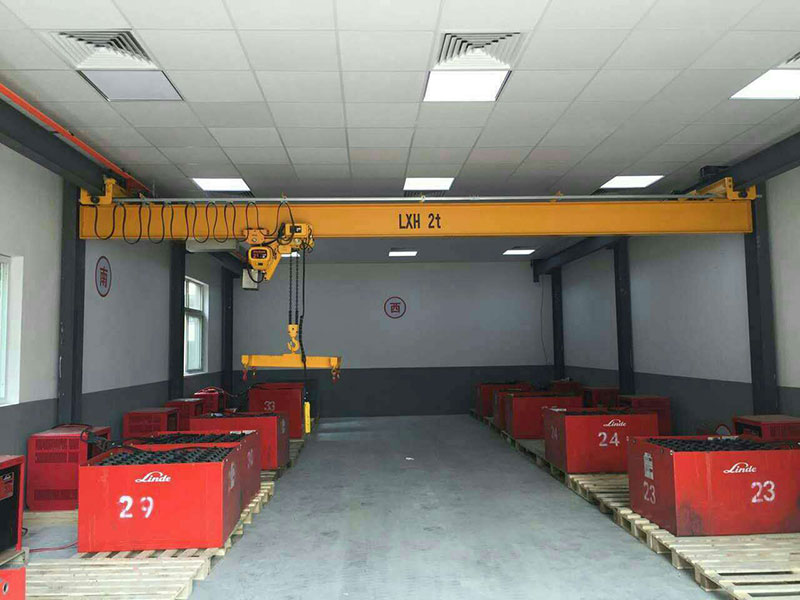1. Pre-Operation Checks
Inspection: Conduct a comprehensive inspection of the crane before each use. Look for any signs of wear, damage, or potential malfunctions. Ensure all safety devices, such as limit switches and emergency stops, are functional.
Area Clearance: Verify that the operating area is free of obstructions and unauthorized personnel to ensure a safe lifting environment.
2. Load Handling
Adherence to Weight Limits: Always adhere to the crane’s rated load capacity. Confirm the weight of the load to prevent overloading.
Proper Rigging Techniques: Use appropriate slings, hooks, and lifting devices to secure the load. Ensure the load is balanced and rigged correctly to avoid tipping or swinging.
3. Operational Guidelines
Smooth Operation: Operate the underslung overhead crane with smooth, controlled movements. Avoid sudden starts, stops, or changes in direction that could destabilize the load.
Constant Monitoring: Keep a close watch on the load during lifting, moving, and lowering. Ensure it remains stable and secure throughout the process.
Effective Communication: Maintain clear and consistent communication with all team members involved in the operation, using standard hand signals or communication devices.
4. Utilization of Safety Features
Emergency Stops: Be familiar with the crane’s emergency stop controls and ensure they are easily accessible at all times.
Limit Switches: Regularly check that all limit switches are operational to prevent the crane from over-traveling or colliding with obstacles.


5. Post-Operation Procedures
Safe Parking: After completing the lift, park the crane in a designated area that does not obstruct walkways or workspaces.
Power Shutdown: Properly shut down the crane and disconnect the power supply if it will not be used for an extended period.
6. Routine Maintenance
Scheduled Maintenance: Follow the manufacturer’s maintenance schedule to keep the crane in top working condition. This includes regular lubrication, component checks, and replacements as necessary.
Documentation: Keep detailed records of all inspections, maintenance activities, and repairs. This helps in tracking the crane’s condition and ensuring compliance with safety regulations.
By adhering to these guidelines, operators can ensure the safe and efficient operation of underslung overhead cranes, minimizing the risk of accidents and maintaining a safe working environment.
Post time: Aug-08-2024









